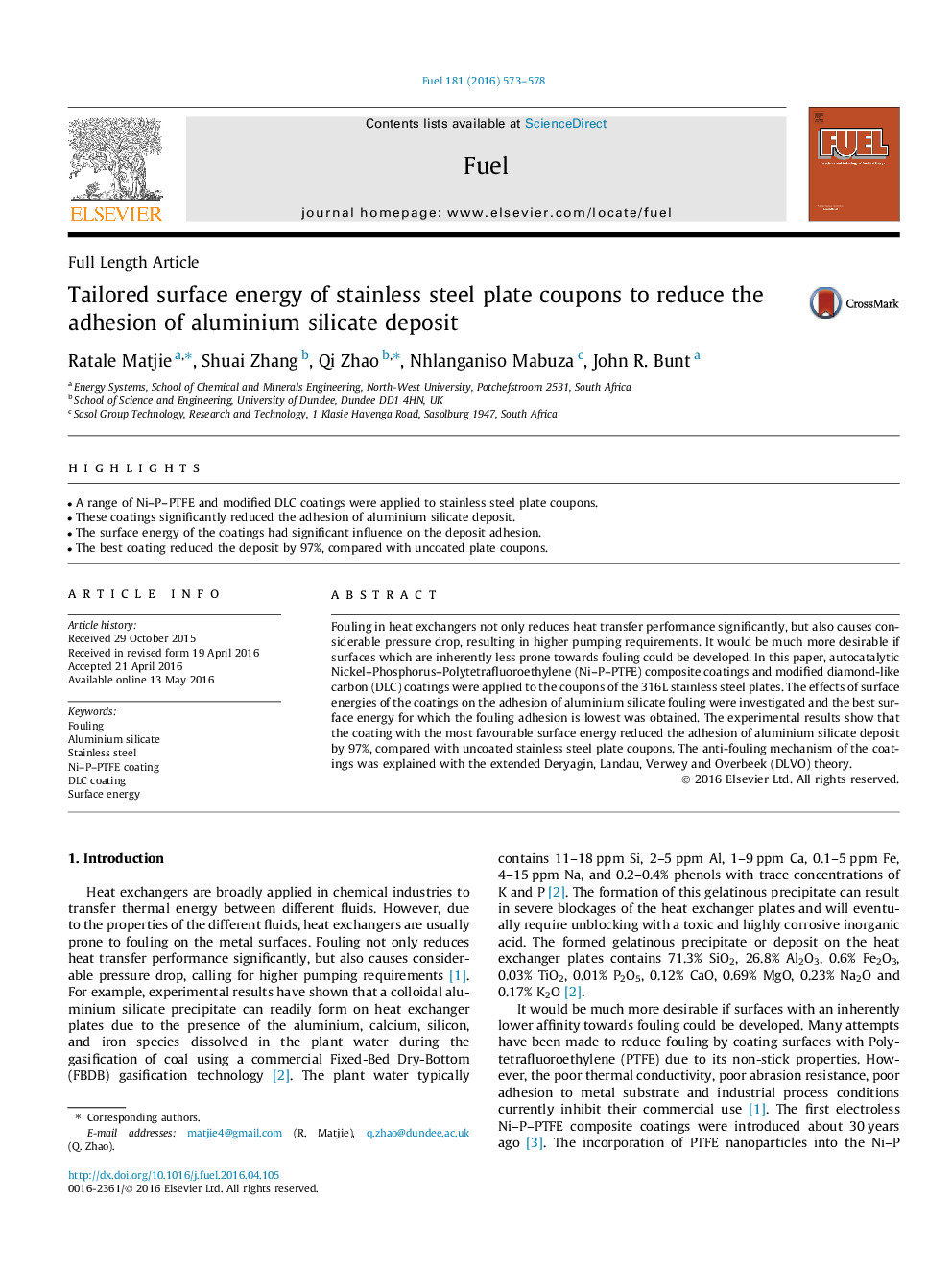| Article ID | Journal | Published Year | Pages | File Type |
|---|---|---|---|---|
| 204945 | Fuel | 2016 | 6 Pages |
•A range of Ni–P–PTFE and modified DLC coatings were applied to stainless steel plate coupons.•These coatings significantly reduced the adhesion of aluminium silicate deposit.•The surface energy of the coatings had significant influence on the deposit adhesion.•The best coating reduced the deposit by 97%, compared with uncoated plate coupons.
Fouling in heat exchangers not only reduces heat transfer performance significantly, but also causes considerable pressure drop, resulting in higher pumping requirements. It would be much more desirable if surfaces which are inherently less prone towards fouling could be developed. In this paper, autocatalytic Nickel–Phosphorus–Polytetrafluoroethylene (Ni–P–PTFE) composite coatings and modified diamond-like carbon (DLC) coatings were applied to the coupons of the 316L stainless steel plates. The effects of surface energies of the coatings on the adhesion of aluminium silicate fouling were investigated and the best surface energy for which the fouling adhesion is lowest was obtained. The experimental results show that the coating with the most favourable surface energy reduced the adhesion of aluminium silicate deposit by 97%, compared with uncoated stainless steel plate coupons. The anti-fouling mechanism of the coatings was explained with the extended Deryagin, Landau, Verwey and Overbeek (DLVO) theory.
